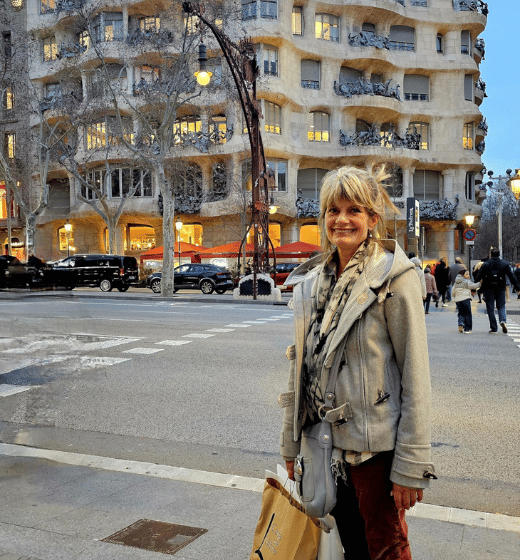

Susan, a vibrant woman in her mid-50s from the US, has always had a deep passion for languages and cultural exchange. As a real estate housing provider, communication is at the heart of her work—so it’s no surprise that she also enjoys exploring new languages, including French, Portuguese, and Spanish. Her goal? To confidently hold simple, natural conversations in Spanish and use the language more fluently with members of her team.
In preparation for her journey to Barcelona, Susan took care of every detail—boarding passes printed, travel plans confirmed, and excitement growing by the day. Her love for learning brought her to Spain for a unique and personalised experience with the Spanish Homestay Immersion Program (SHIP).
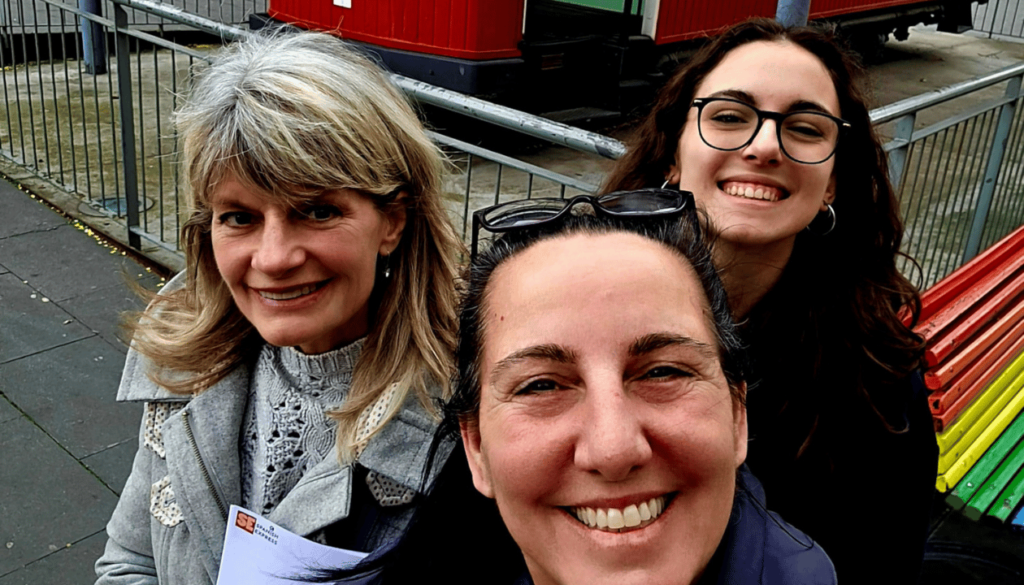
Outside of her lessons, Susan enjoys hiking scenic trails, experimenting in the kitchen, relaxing at the Korean spa, diving into books, playing games, and spending quality time with her children and friends. All of these interests aligned beautifully with the immersive, cultural approach of SHIP—making her week in Barcelona both enriching and unforgettable.
Immersive Language Learning
Throughout the week, Susan took part in personalised Spanish lessons focused on practical conversation and SIELE exam preparation. Together with me and my amazing teacher assistants, Laura and Lydia, we tailored each session to her level and goals—from mastering essential travel vocabulary to strengthening grammar using verb-focused exercises.
The interactive nature of her classes made learning both enjoyable and effective. Whether seated at the kitchen table, chatting on walks, or reviewing vocabulary during outings, Susan made great progress and quickly began using Spanish in real-life situations with growing confidence.
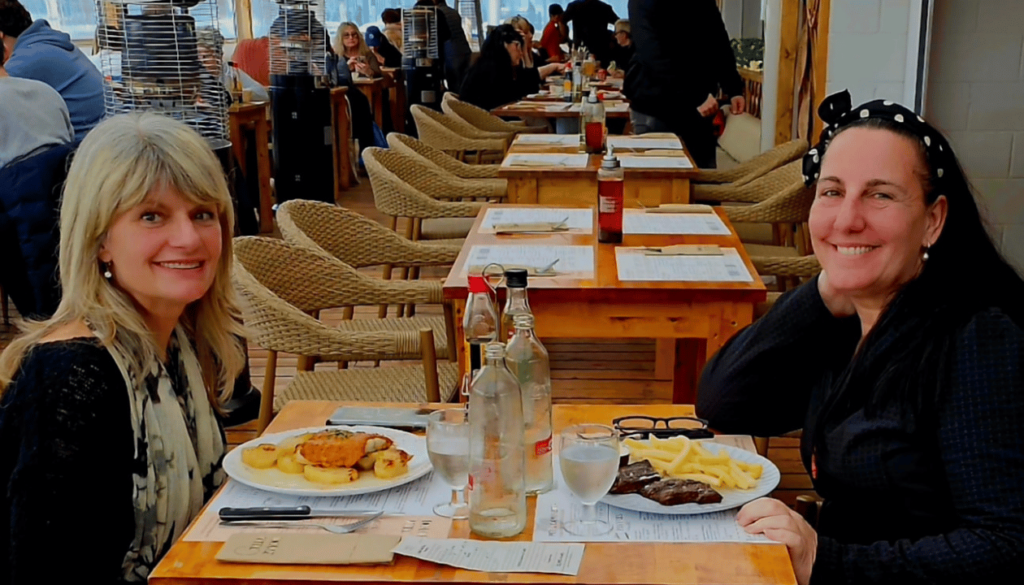
Beyond the City: Discovering the Province of Barcelona
Barcelona, the vibrant capital of Catalonia, was the perfect destination for Susan’s cultural and linguistic adventure. But her experience wasn’t limited to the city centre alone. Throughout the week, she explored the wider province of Barcelona, including the charming towns of Dosrius, Argentona, and Mataró—each offering its own unique window into Catalan life.
From modernist architecture and artisan traditions to natural landscapes and local festivals, every place we visited contributed to a richer, more authentic immersion. These diverse settings allowed Susan to practise Spanish in real-life situations, surrounded by the rhythm of everyday life in both urban and rural Catalonia.
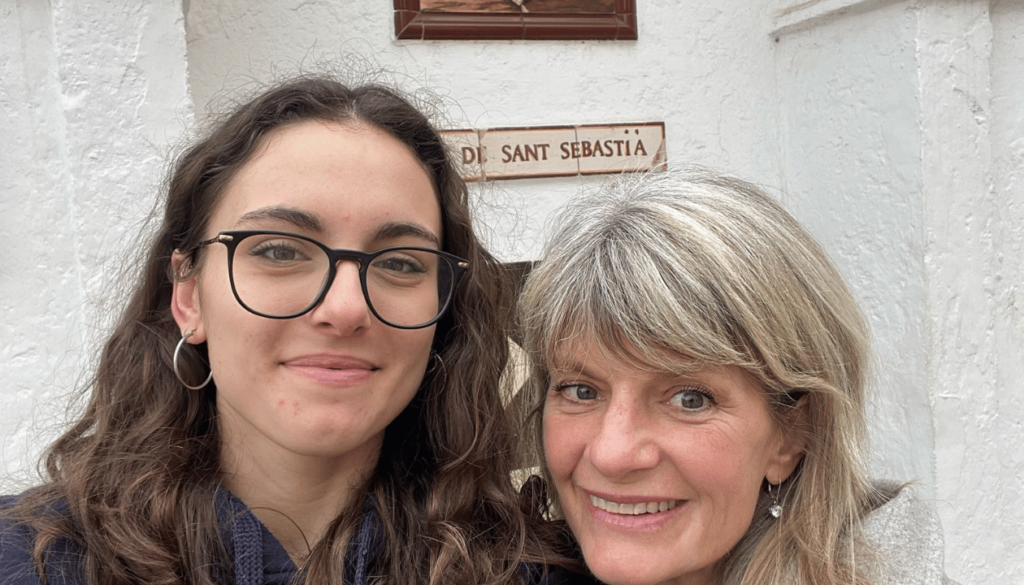
Celebrating Culture Through Experience Around Mataró
Susan’s journey included colourful cultural experiences that helped her feel like a true local. The CITY of Mataró, with its rich calendar of festivals and lively traditions, offered the perfect setting for cultural immersion. She joined the vibrant Carnival festivities, explored architectural gems like Casa Coll i Regàs and Nau Gaudí, and soaked up the spirit of Catalan identity through art, history, and design.
These outings went far beyond sightseeing—they were deeply immersive moments where Susan could practise Spanish in meaningful, real-world contexts. With its mix of tradition, creativity, and family-friendly charm, Mataró also proved to be an engaging destination for all ages.
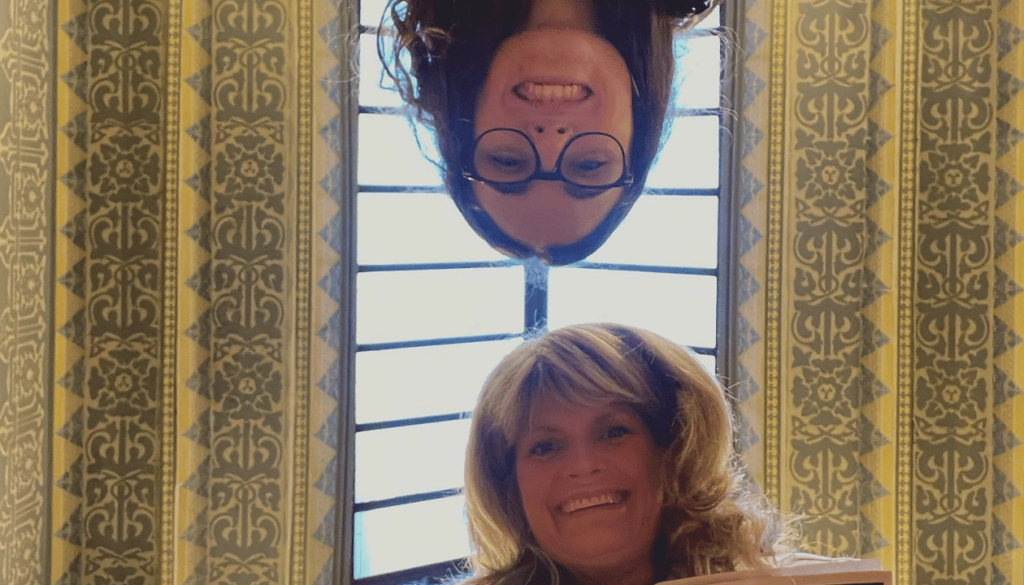
Experiencing the Mataró Carnival
One of the liveliest moments of Susan’s week was joining the Carnival celebration in Mataró. The streets came alive with colourful costumes, music, and laughter, creating the perfect setting for cultural immersion.
Surrounded by locals, Susan had the chance to observe and engage with authentic Spanish expressions and traditions in real time. It wasn’t just a show—it was a joyful, community-driven experience that brought her even closer to the heart of Spanish culture.
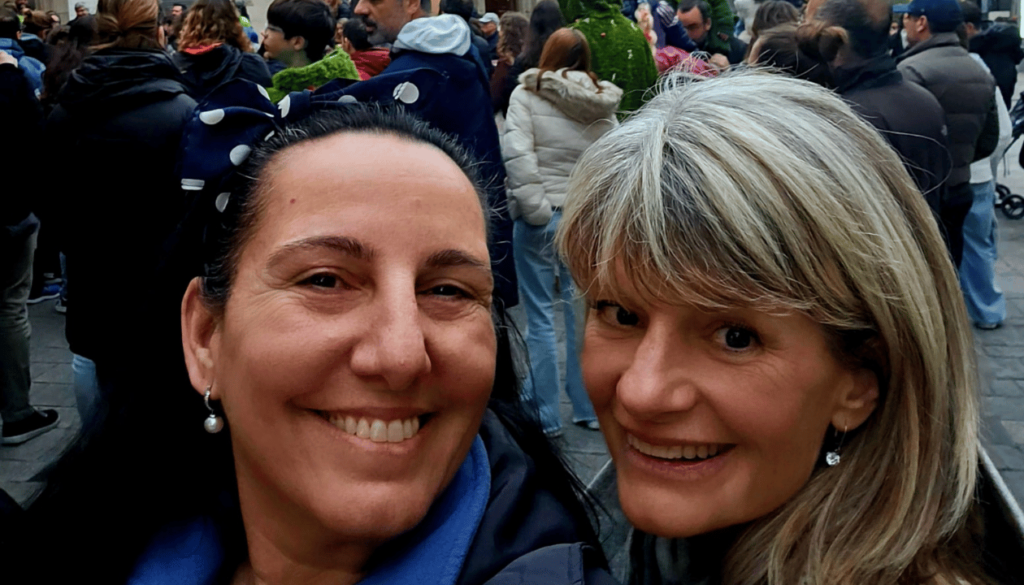
Discovering Modernism at Casa Coll i Regàs
Together with my teacher assistant Laura, Susan visited Casa Coll i Regàs, a modernist architectural gem in Mataró designed by Josep Puig i Cadafalch. The tour offered a rich and personal look into Catalan modernism.
Susan explored the intricacies of the building while learning vocabulary related to art, architecture, and daily life at the turn of the 20th century. The conversation flowed naturally in Spanish, making the experience both cultural and linguistically meaningful.
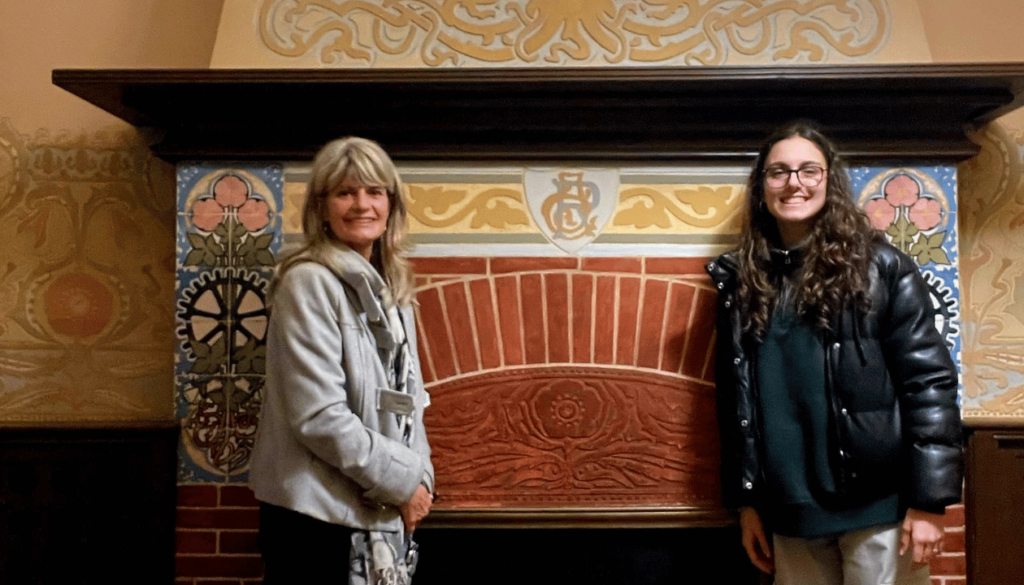
Stepping into Modernist History at Nau Gaudí
Susan also had the opportunity to visit Nau Gaudí, the first building designed by the legendary Antoni Gaudí. As we wandered through the elegant, industrial space, we discussed Gaudí’s unique architectural vision and its importance in Catalonia’s cultural identity. With every sculpture and structural detail, we connected language to context, turning this visit into a vivid and engaging Spanish lesson.
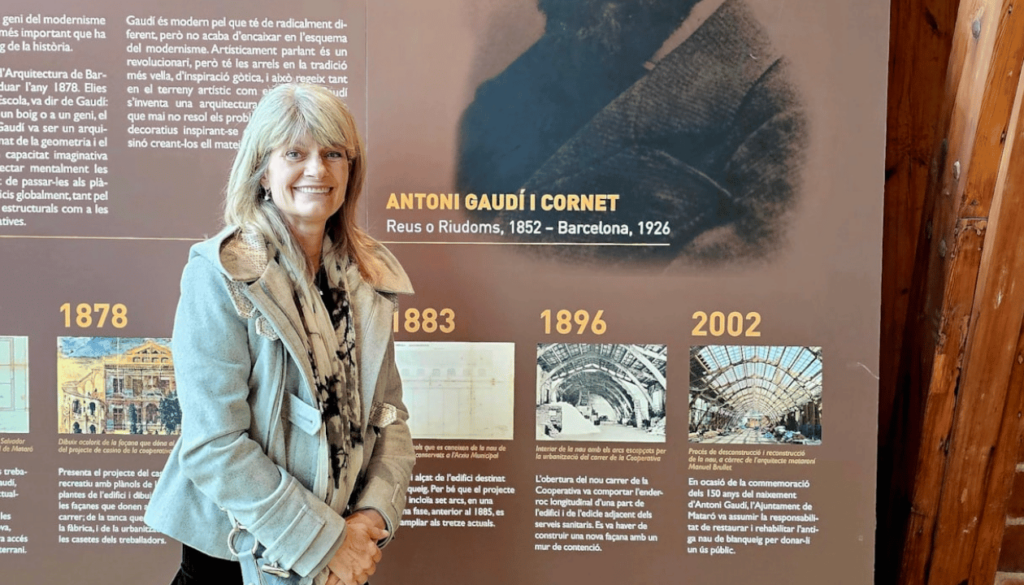
Learning Through Educational Tours Around the Maresme Coast
As part of her SHIP experience, Susan took part in several guided educational tours that turned every step into an opportunity to learn Spanish in context. The scenic Maresme Coast offered the perfect backdrop for cultural discovery—rich in history, nature, and local life.
During the week, Susan visited the Jug Museum (Museu del Càntir) in Argentona with my mum and me, strolled through the Art forest of Dosrius with Lydia, and joined all of us for a historical walking tour of Mataró. Each activity deepened her understanding of Spanish culture while helping her absorb new vocabulary related to nature, community, and heritage, all through active, engaging Spanish conversations with all of us.

Learning Through Nature in Dosrius
With Lydia’s guidance, Susan explored the forests of Dosrius through an artistic and educational lens. Using a custom-made educational booklet, she engaged in exercises that helped her connect grammar and vocabulary with what she was seeing around her—sculptures among the trees, native plants, and forest animals.
They discussed themes like environmental awareness and local legends, making this a truly holistic learning experience that blended nature, culture, and language beautifully.
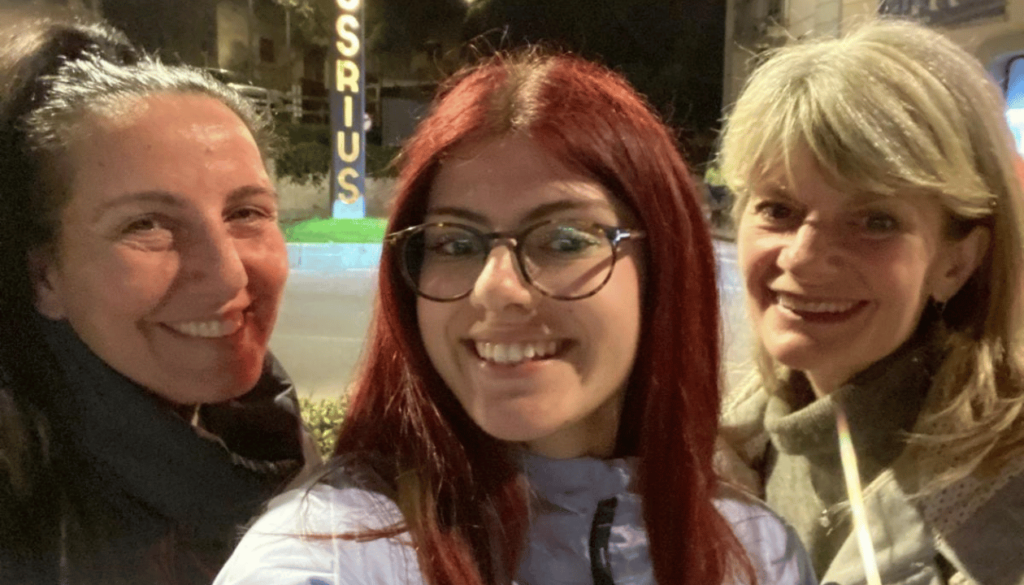
Educational Visit to the Jug Museum in Argentona
Accompanied by my mum and me, Susan visited the Museu del Càntir, a fascinating museum dedicated to the history of water jugs from across Spain.
As we moved through the exhibits, she practised new vocabulary related to materials, shapes, and everyday life, while learning about the importance of water in Spanish traditions. It was a perfect blend of curiosity, culture, and conversation.
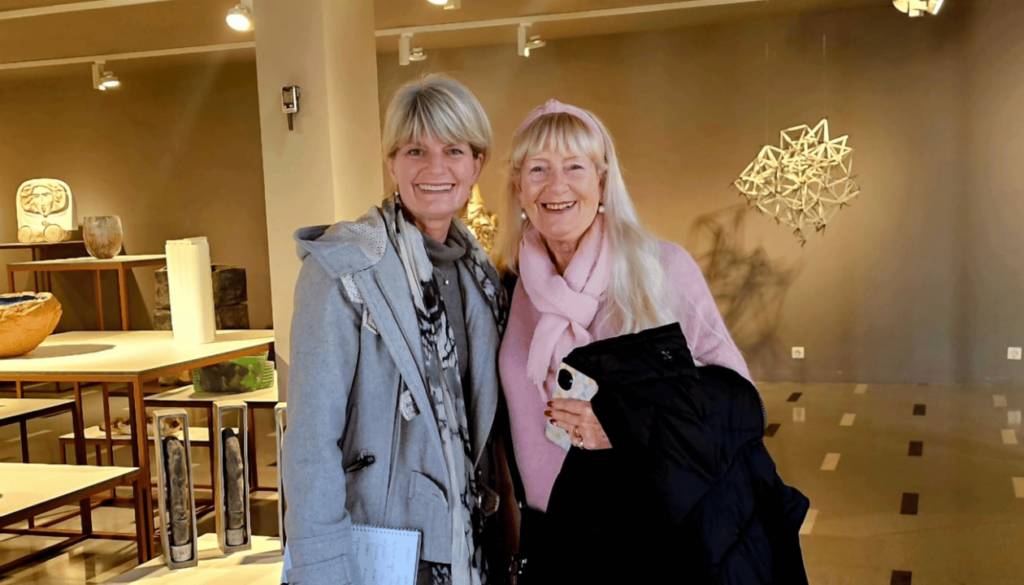
Exploring the Heart of Barcelona
One afternoon, we explored the city centre of Barcelona. From the stylish streets of Passeig de Gràcia to the hidden corners of the Gothic Quarter, Susan embraced the city’s rhythm while applying her Spanish in a natural way—asking for directions, chatting with shopkeepers, and navigating her way confidently through the bustling centre.
Public transport in Barcelona is well-developed, making it easy to move around and discover the city’s many attractions. It was a day filled with discoveries, both linguistic and cultural.
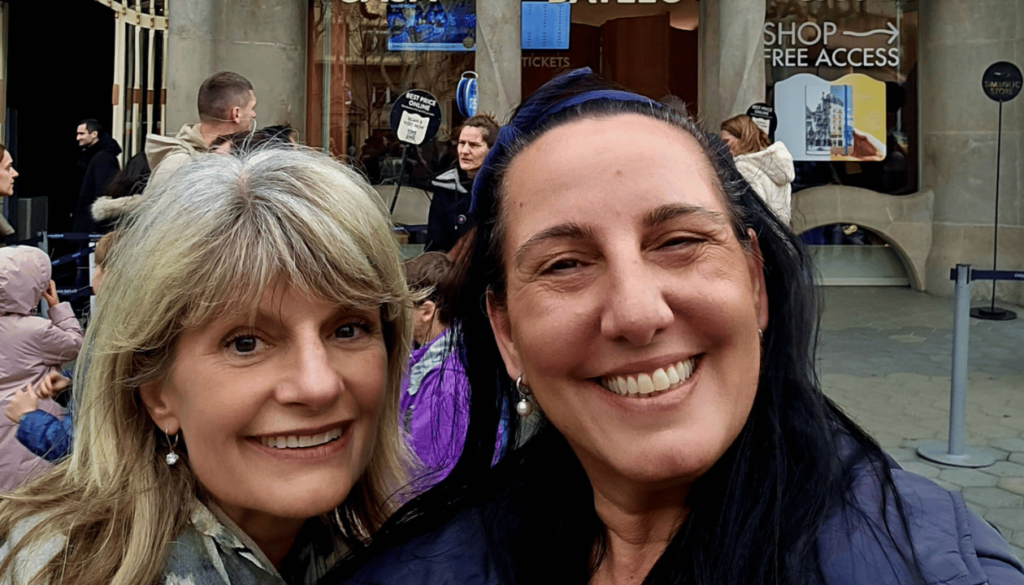
A Cultural Gem: Casa Amatller
During our visit to Barcelona, one of the most impressive stops was Casa Amatller, a stunning modernist building by Puig i Cadafalch.
Located beside Casa Batlló, it reveals the story of the Amatller family and their chocolate empire. Barcelona is famous for its Art Nouveau architecture, including works by Gaudí, and this visit offered a glimpse into the city’s rich artistic heritage.
Susan explored its beautifully decorated rooms while learning about daily life in 19th-century Catalonia. The visit was rich with historical vocabulary and insightful conversation that brought the experience fully to life in Spanish.
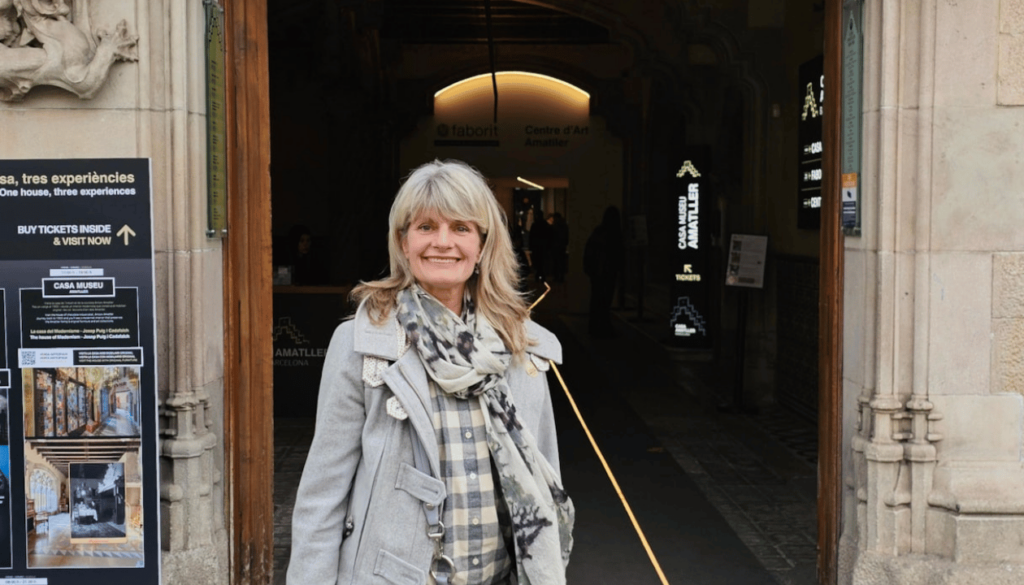
Casa Milà: A Symbol of Catalan Modernism
While in Barcelona, Susan had the chance to admire the striking façade of Casa Milà, also known as La Pedrera, one of the most iconic works of Antoni Gaudí. Located on the elegant Passeig de Gràcia, this architectural masterpiece stands out with its undulating stone walls, ironwork balconies, and organic, nature-inspired design.
Casa Milà represents the bold spirit of Catalan modernism—a movement that shaped much of the city’s identity. Discussing its history and unique features offered a great opportunity to reflect on the role of art and architecture in Spanish culture, all while expanding vocabulary in a meaningful way.
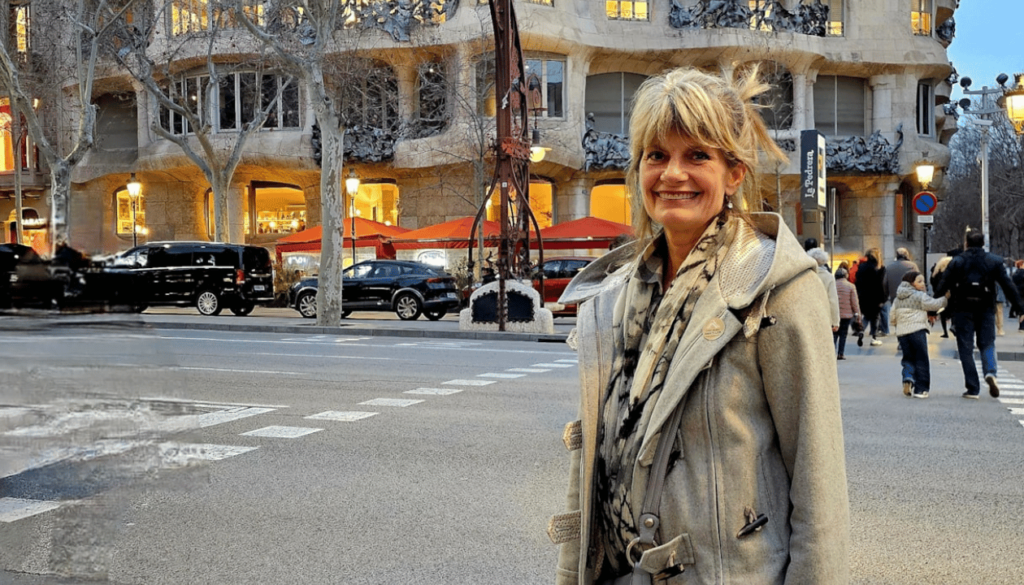
Sharing Meals, Stories & Spanish
Food was, without a doubt, one of the highlights of Susan’s immersion experience. Throughout the week, she shared meals with me, my family, and our teacher team in cozy, authentic settings like Can Pedragosa, a traditional Catalan masía, and a beloved churrería in Mataró.
A very special mention goes to my dad, who is truly the chef of the house. He made sure Susan was always well-fed with hearty, home-cooked meals, lovingly prepared and always served with a smile.
From traditional Catalan dishes to comforting family favourites, his cooking brought us all together around the table. For Susan, mealtimes became not just a moment to enjoy delicious food, but also to practise Spanish in the most natural and heartwarming way possible—right at home.
It was in these relaxed, shared experiences that Susan began to truly live the language, not just study it.
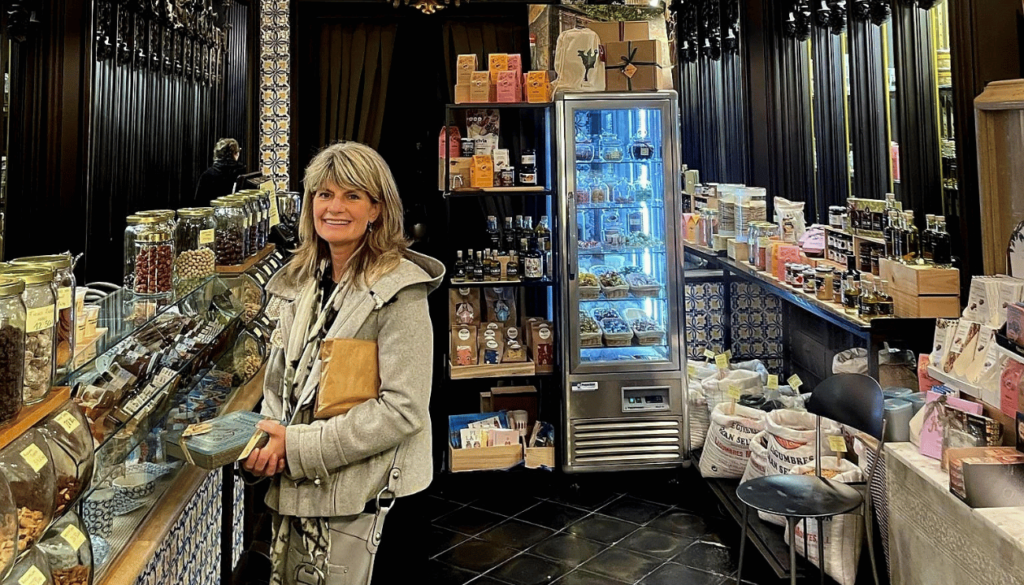
A Taste of Tradition at Can Pedragosa
A highlight of our week was lunch at Can Pedragosa, a beautiful Catalan masía in the countryside. In this warm and rustic setting, Susan experienced the true flavours of the region.
Reading the menu, ordering in Spanish, and talking with us over a leisurely meal turned this outing into a cultural experience as well as a language-learning opportunity.
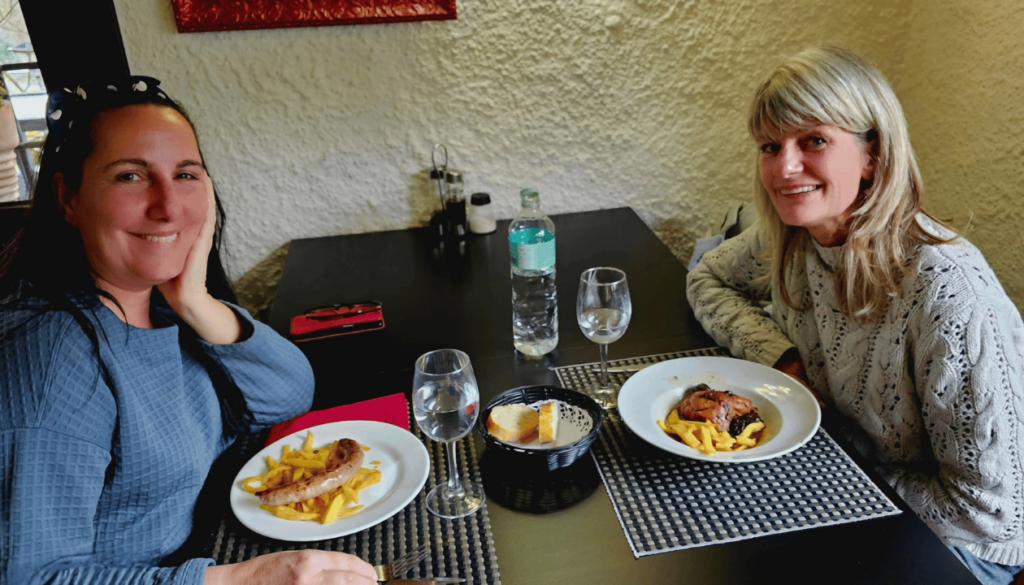
A Sweet Pause: Chocolate con Churros
We made a stop at one of Mataró’s churrerías for chocolate con churros. Sitting in the lively city centre, we enjoyed this classic treat while chatting about the day. Even something as simple as ordering and sharing a snack became a chance to practise Spanish naturally—and to create a sweet memory along the way.
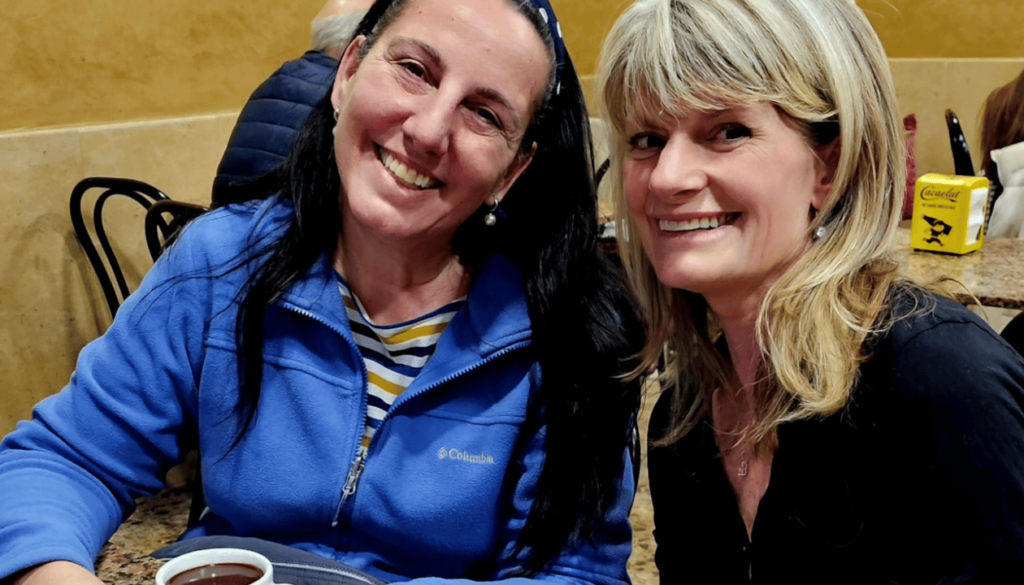
A Week of Connection & Growth
What truly made Susan’s SHIP experience unforgettable—for both of us—was the genuine human connection she built throughout her stay. From the very beginning, she became part of our extended family.
She shared laughs and deep conversations with me, with my teacher assistants Laura and Lydia, and connected beautifully with my mum and dad, who, as the chef of the house, kept us all wonderfully fed with his delicious cooking.
We shared walks, meals, games, stories, and countless moments that made the learning experience real and personal. Whether we were reviewing Spanish verbs, playing with my two Golden Retrievers, Rumba and Samba, or chatting over a cup of tea, every interaction became a natural extension of her learning.
By the end of the week, Susan wasn’t just speaking Spanish—she was living it. And for me, seeing her grow in confidence while fully embracing the culture, the language, and the gastronomy was an absolute joy.
Essential Guide to Travels to Barcelona: Top Tips and Must-See Sights
Whether you’re joining us for a SHIP experience or planning a cultural getaway, Barcelona and its surrounding region offer an incredible mix of history, language, cuisine, and adventure. Here’s a quick guide to help you make the most of your time in the Catalan capital.

Planning Your Trip to Barcelona
Before you arrive, make sure your travel documents are in order—once you get the green light, your adventure can begin! Booking accommodation and transport ahead of time is highly recommended, especially during peak seasons like spring and summer. And don’t forget a reusable water bottle and comfortable shoes—Barcelona is a city best explored on foot!
Getting Around Barcelona
Barcelona has an excellent public transport network, including metro lines, buses, trams, regional trains, and well-marked cycle lanes that make biking a great way to explore. Consider buying a Hola Barcelona Travel Card for unlimited rides during your stay. For shorter distances, walking is often the best way to enjoy the city’s architecture and atmosphere. Taxis are reliable, and apps like FreeNow or Bolt are widely used.
Exploring the Catalan Capital
The city is a showcase of modernist architecture, historic landmarks, and vibrant street life. Highlights include La Sagrada Família, Parc Güell, the Gothic Quarter, Casa Batlló, and Passeig de Gràcia. Don’t miss the magic of a sunset at Bunkers del Carmel or the seaside views from Barceloneta Beach. Spanish and Catalan are both spoken here, so it’s a great place to practise what you learn during your immersion!
Best Things to Do in Barcelona
- Barcelona offers a wide array of things to do: visit Gaudí’s masterpieces like La Pedrera, Casa Batlló, and the Sagrada Família
- Stroll through El Born and the Gothic Quarter
- Enjoy tapas at a traditional bodega
- Watch a flamenco or rumba show
- Discover local art at MNAC or MACBA
- Explore the local markets like Mercat de Sant Antoni or La Boqueria
Insider Tips and Practical Information
- Meal times are later in Spain: lunch around 2pm, dinner after 8pm
- Shops often close mid-afternoon, especially in smaller towns
- Tipping is appreciated but not obligatory (5–10% is more than enough)
- Pack layers—weather can shift quickly between sunny and breezy
- Try a few local phrases in Spanish or Catalan. A little effort goes a long way!
Day Trips and Excursions
Barcelona is the gateway to stunning nearby destinations. Some top picks:
- Mataró: a coastal gem with local charm and modernist treasures
- Argentona: home to the Museu del Càntir and traditional Catalan crafts
- Dosrius: a peaceful escape into nature and artistic woodland trails
- Montserrat: a mountaintop monastery with breathtaking views
- Sitges: a stylish seaside town with beaches, art, and festivals
- Girona: a medieval city with Roman history and Game of Thrones filming locations

